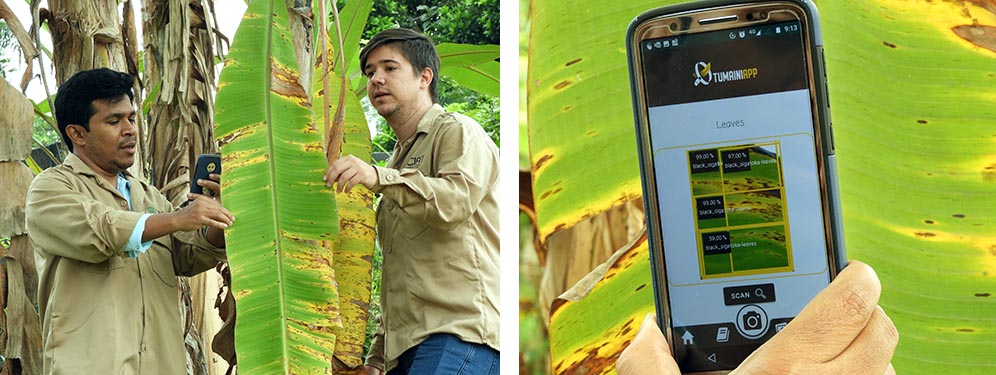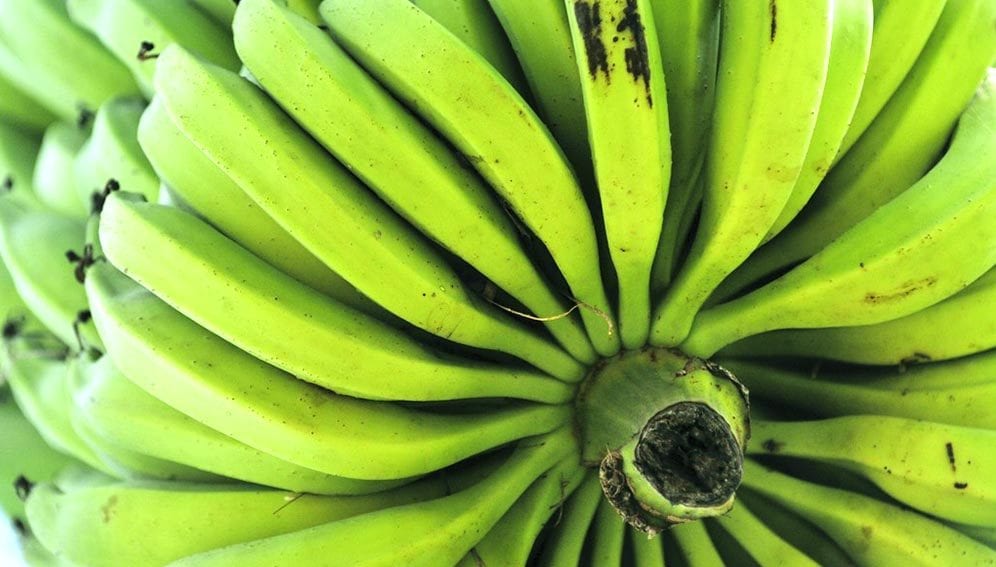Send to a friend
The details you provide on this page will not be used to send unsolicited email, and will not be sold to a 3rd party. See privacy policy.
A deadly fungus that has plagued banana plantations in parts of Asia for three decades has now spread to Latin America, the heart of production, raising widespread alarm. But a team of international researchers has created a high-tech solution to help farmers limit the damage.
Using artificial intelligence (AI), researchers developed an app for mobile phones that can identify five diseases affecting banana plants, including Fusarium wilt, or Panama disease. The soil-borne fungus threatens the Cavendish banana, a variety that accounts for half of global banana production and the vast majority of international exports.
The Colombian Agricultural Institute (ICA) declared a “national emergency” earlier this month after confirming that the Tropical Race 4 (TR4) strain of the disease was detected in Colombia – the first country in the region to be affected.
“Small farmers do not have access to science and for scientists it is difficult to obtain data from smaller plantations. That is why the app aims to be a bridge between these two worlds,”
Michael Gomez Selvaraj, International Center for Tropical Agriculture
The app designed by scientists from the Colombia-based International Center for Tropical Agriculture (CIAT), the Imayam Institute of Agriculture and Technology (IIAT), in India, and Texas A&M University, in the US, can detect pathogens at an early stage, enabling farmers to act promptly to stem the disease.
By using more than 20,000 pictures of banana plants infected by Xanthomonas wilt, Fusarium fungus, black and yellow Sigatoka, banana bunchy top virus and weevils, they built software that can identify the symptoms of each of these common banana diseases.
Michael Gomez Selvaraj, a CIAT researcher and lead author of the paper published in Plant Methods, told SciDev.Net: “After one year we achieved 90 per cent precision.”
Banana is one of the most consumed fruits in the world, with total exports exceeding 23 million tonnes in 2018, according to a report by market research firm Mordor Intelligence.
The Tumaini app – meaning ‘hope’ in Swahili – was tested in Colombia, as well as in the Democratic Republic of Congo, India, Benin, China and Uganda. The developers say it will be freely available for Android operating systems within the next month, in five languages: Spanish, English, French, Swahili and Tamil.

“The app is very visual, so if farmers don’t know how to read, they can also use it. Besides, it does not need to have an internet connection.”
Every time a farmer takes a picture and the system scans it, this information feeds into a global database, which will build a global picture of the state of pests.
Originally detected in Southeast Asia in the 1990s, the Fusarium TR4 fungus had been restricted to the Asian continent until 2013, when the first case was detected outside that region, in Jordan.
Fernando García-Bastidas, a banana researcher for the biotech company KeyGene, told SciDev.Net: "At that time it was detected in six countries, but today it is present in 18 and it is suspected that there are more.”
At the beginning of the decade, the fungus caused losses of US$ 121 million in Indonesia, US$ 253 million in Taiwan and of US $14 million in Malaysia, figures from the Food and Agriculture Organization show.
The disease, which attacks the plant’s water-carrying vessels, causing it to wilt and die, has no treatment – only containment measures can be taken.
García-Bastidas, who was in charge of coordinating the sampling and diagnosis of the disease in Colombia, said the fungus may have been brought into the country on the shoes of tourists visiting banana plantations.
While the Tumaini app would not have been able to recognise the specific strain, it could have been helpful in identifying the Fusarium fungus, García-Bastidas believes.“The application is clearly much more powerful than the human eye,” he said. "It allows surveillance and an initial diagnosis that can trigger the alarm and allow authorities to take action faster.”
The more the app is used, the better its accuracy, because it is fed with more information, added Gomez Selvaraj. And, while the software was specially created for bananas, the system could also be used on other crops, such as cassava, beans and palm, said the researcher, who has high hopes for the application.
“In the future we hope it can connect with satellites and allow satellite monitoring of diseases,” he added.














